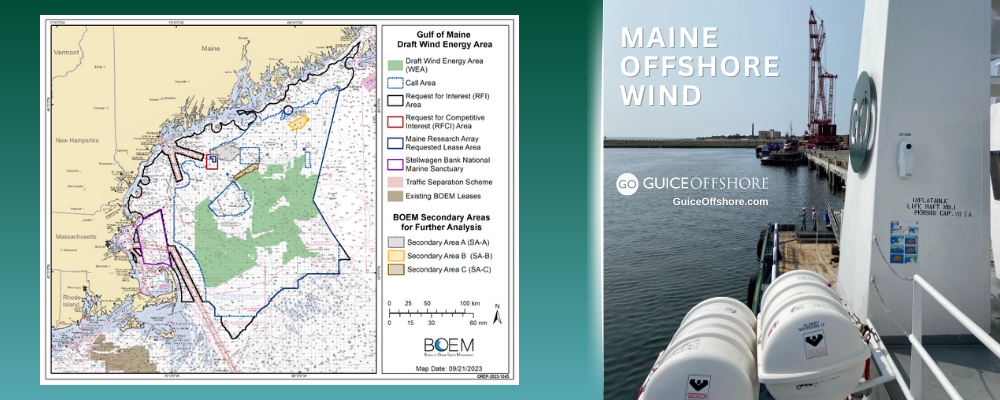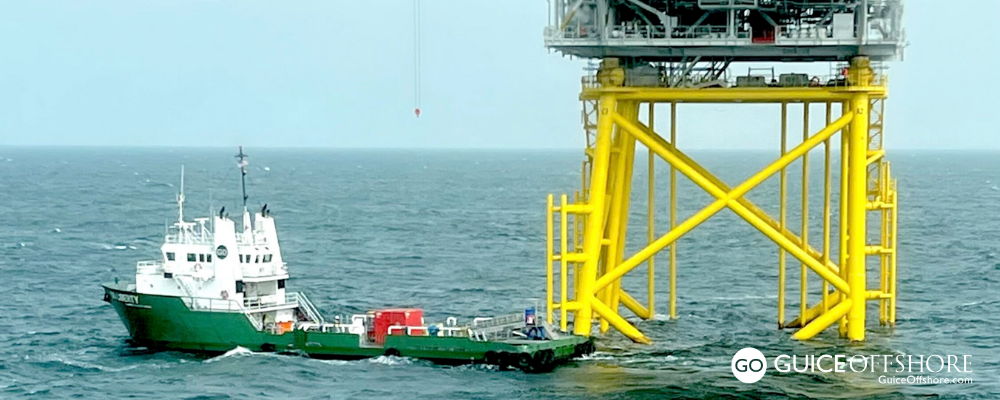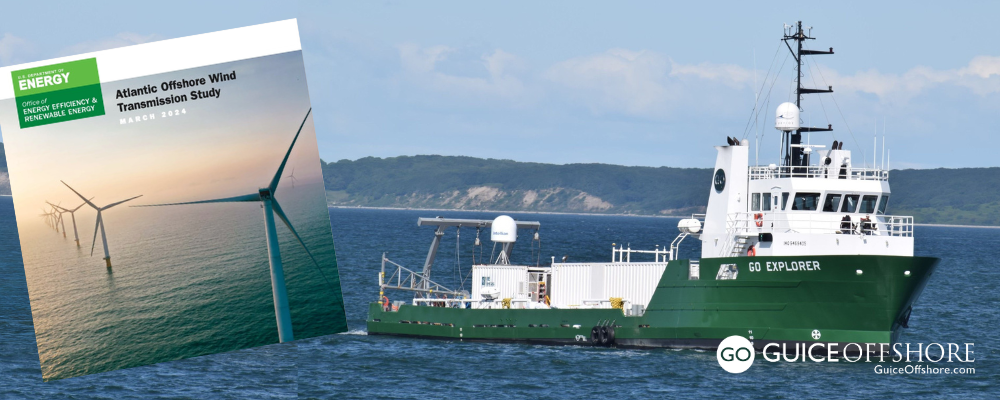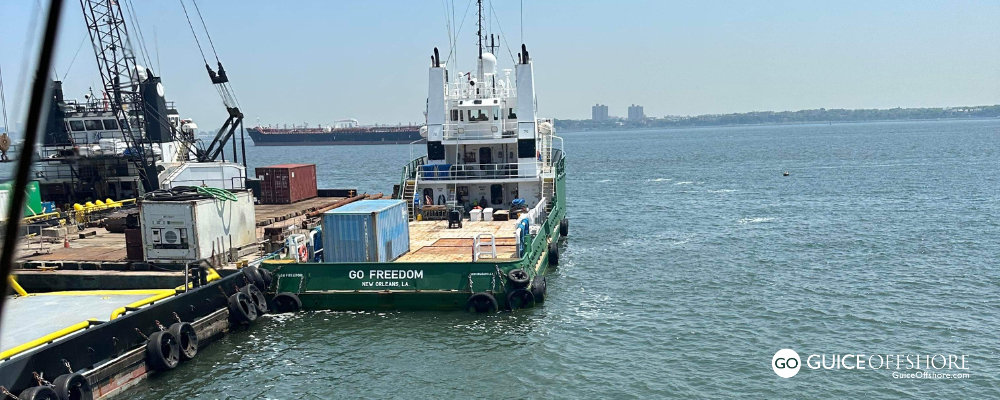Comments are due to the Bureau of Ocean Energy Management (BOEM) by November 20, 2023 on the Gulf of Maine Draft Offshore Wind Energy Area (WEA), which covers approximately 3,519,067 acres offshore Maine, Massachusetts and New Hampshire, ranging from approximately 23 – 120 miles off the coast.
A map of the Draft WEA can be found on BOEM’s Gulf of Maine webpage.
To read BOEM’s October 2023 Draft Siting Analysis report on the Gulf of Maine, click here.
“BOEM will continue to prioritize a robust and transparent planning process, including engagement with Tribal governments, federal and state agencies, the fishing community and other ocean users,” said BOEM Director Elizabeth Klein. “BOEM strives to minimize potential impacts and will continue working hard to finalize offshore areas that have strong resource potential and the fewest environmental and user conflicts.”
The Gulf of Maine has significant opportunities for offshore wind energy development, which will create good-paying jobs and new economic activity. Due to the deep waters within the Gulf of Maine, these areas are also an opportunity to accelerate U.S. leadership in floating offshore wind technologies.
In late July 2023, Maine Governor Janet Mills signed a new law that also contains provisions for lobster fishing in the Gulf of Maine and to prioritize jobs for Maine residents, Renewable Energy Magazine reported.
Access Governor Mills’ offshore wind updates here.
Since 2021, BOEM has approved the nation’s first four commercial scale offshore wind projects, held four offshore wind lease auctions – including a record-breaking sale offshore New York and the first-ever sale offshore the Pacific and Gulf Coasts, initiated environmental review of 10 offshore wind projects, and advanced the process to explore additional Wind Energy Areas in Oregon, Gulf of Maine and Central Atlantic. The Department of the Interior has also taken steps to evolve its approach to offshore wind to drive towards union-built projects and a domestic based supply chain.
The Draft WEA has a capacity of over 40 GW, which exceeds the current combined offshore wind energy planning goals for the Gulf of Maine states: 10 GW for Massachusetts and 3 GW for Maine. Future adjustments to the Draft WEA will likely be made after incorporating feedback during the comment period, while striving to retain sufficient area to meet the Gulf of Maine states’ planning goals.
To identify the Draft WEA, BOEM worked collaboratively with the National Oceanic and Atmospheric Administration’s National Centers for Coastal Ocean Science to develop an ocean planning model that identifies and minimizes conflicts with coastal and marine resources and ocean users. BOEM also met with and incorporated feedback from Tribes, fishers, and the public to refine the model and inform the potential offshore locations that appear most suitable for floating offshore wind energy development.
The Draft WEA avoids Lobster Management Area 1 and all North Atlantic Right Whale Restricted Areas. The Draft WEA also avoids other important fishing areas and habitats, including important groundfish areas east of the Western Gulf of Maine Closure and within the 10-kilometer buffer from Georges Bank, Platts Bank, Parker Ridge, and Three Dory Ridge. In response to initial conversations with Tribal Nations located within Maine, the Draft WEA strives to avoid a majority of the historic and present fishing grounds of those Tribes. BOEM will continue to consult with all Tribal Nations and other stakeholders who have an interest in the region to understand their concerns with potential offshore wind energy development and minimize conflicts.
BOEM also seeks comments on whether to add all or parts of three secondary areas that were identified for additional analysis but not part of the Draft WEA.
Public Meetings and Comments
During the 30-day public comment period that started on Oct. 19, 2023, BOEM held a series of public meetings to outline data and information used to inform the Draft WEA and discuss next steps. Additional information on the public meetings is available on BOEM’s Gulf of Maine webpage.
To comment on the Draft WEA please go to regulations.gov and search for docket number BOEM-2023-54. BOEM will accept comments through 11:59 pm ET on Nov. 20, 2023.
The Oceantic Network (formerly the Business Network for Offshore Wind) Welcomes Gulf of Maine Offshore Wind News
The Oceantic Network, the leading organization working to accelerate offshore wind energy deployment and build a dedicated domestic supply chain, welcomed the Bureau of Ocean Energy Management Gulf of Maine Wind Energy Area announcement.
In total, this designated area has the capacity to generate up to 40 GW of offshore wind energy. While the total area of installed projects will be lower, this draft WEA allows for significant progress on the U.S. goals of 30 GW of wind energy by 2030 and 15 GW of floating wind energy by 2035.
With waters deeper than those used for previously approved East Coast offshore wind projects, development in the Gulf of Maine will consist almost entirely of floating wind turbines, providing a significant boost to the U.S.’s domestic floating offshore wind supply chain.
“We welcome today’s advancement of draft offshore wind areas in the Gulf of Maine and the continued progress of this administration to hold seven auctions before 2025. This commitment to create a pipeline of future auctions has brought increased confidence to the U.S. market, resulting in billions in new supply chain and infrastructure investments. Advancing leasing in the Gulf of Maine sustains that confidence and unlocks new investment in the U.S. floating offshore wind supply chain, giving our nation the opportunity to catch up with the global market in this emerging field. Floating offshore wind is also crucial to New England states, whose demand for new, clean power generation is predicted to grow from current levels as they move to decarbonize their economies,” said John Begala, vice president of federal and state policy at the Oceantic Network.
The Department of the Interior’s Bureau of Ocean Energy Management (BOEM) is responsible for America’s offshore energy and mineral resources. The bureau promotes energy independence, environmental protection and economic development through responsible, science-based management of energy and mineral resources on the U.S. Outer Continental Shelf.
Guice Offshore Has the Jones Act-Qualified Vessels To Help Meet America’s Offshore Wind Industry Needs
Guice Offshore’s growing fleet of Jones Act-compliant, dynamically positioned offshore supply vessels, mini supply vessels and platform vessels is well positioned to help meet our nation’s wind energy infrastructure installation and service goal deadlines, whether it’s crew transfer, service, cable laying, subsea work like scour protection or equipment transportation.
Guice Offshore vessels are well-maintained, well-manned and feature ample accommodations and sought-after equipment such as A-frames, cranes, winches, moonpools, deck sockets and essentials to facilitate a spectrum of highly specialized offshore projects.
We hold strategic partnerships throughout the United States and maintain our highly capable vessels in accessible locations for quick response to myriad needs of the many specialty industries we serve, including Offshore Wind.
Headquartered in Covington, Louisiana with an operations base in Lafayette, Louisiana and a northeastern Rhode Island office, Guice Offshore operates a 15-vessel fleet of U.S. Flag offshore vessels that includes Subchapter L & I mini supply vessels, multi-purpose and platform vessels in the 150-ft, 170-ft and 205-ft class with DP1 and DP2 certifications.
Guice Offshore operates from coast to coast in North America and select international locales.
Additionally, our subsidiary, GO Marine Services, a catering and offshore labor contractor, supports mission requirements that help minimize mobilization time and expense for Guice Offshore customers with special services like marine riggers, roustabouts and certified protected species observers in compliance with marine mammal regulatory requirements.
For charter inquiries, please contact David Scheyd at david.scheyd@guiceoffshore.com or (985) 273-2769.



